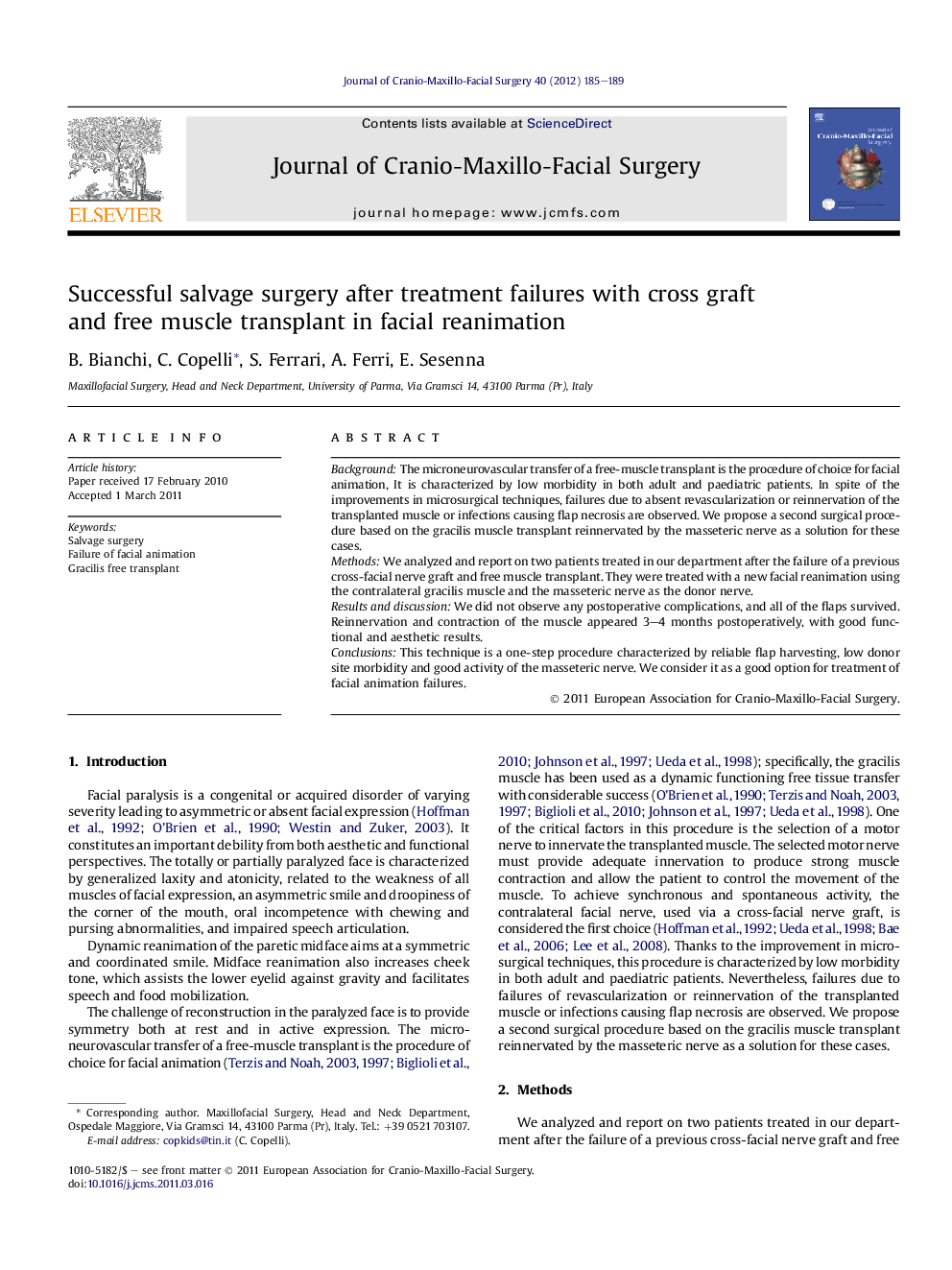| Article ID | Journal | Published Year | Pages | File Type |
|---|---|---|---|---|
| 3143088 | Journal of Cranio-Maxillofacial Surgery | 2012 | 5 Pages |
BackgroundThe microneurovascular transfer of a free-muscle transplant is the procedure of choice for facial animation, It is characterized by low morbidity in both adult and paediatric patients. In spite of the improvements in microsurgical techniques, failures due to absent revascularization or reinnervation of the transplanted muscle or infections causing flap necrosis are observed. We propose a second surgical procedure based on the gracilis muscle transplant reinnervated by the masseteric nerve as a solution for these cases.MethodsWe analyzed and report on two patients treated in our department after the failure of a previous cross-facial nerve graft and free muscle transplant. They were treated with a new facial reanimation using the contralateral gracilis muscle and the masseteric nerve as the donor nerve.Results and discussionWe did not observe any postoperative complications, and all of the flaps survived. Reinnervation and contraction of the muscle appeared 3–4 months postoperatively, with good functional and aesthetic results.ConclusionsThis technique is a one-step procedure characterized by reliable flap harvesting, low donor site morbidity and good activity of the masseteric nerve. We consider it as a good option for treatment of facial animation failures.
